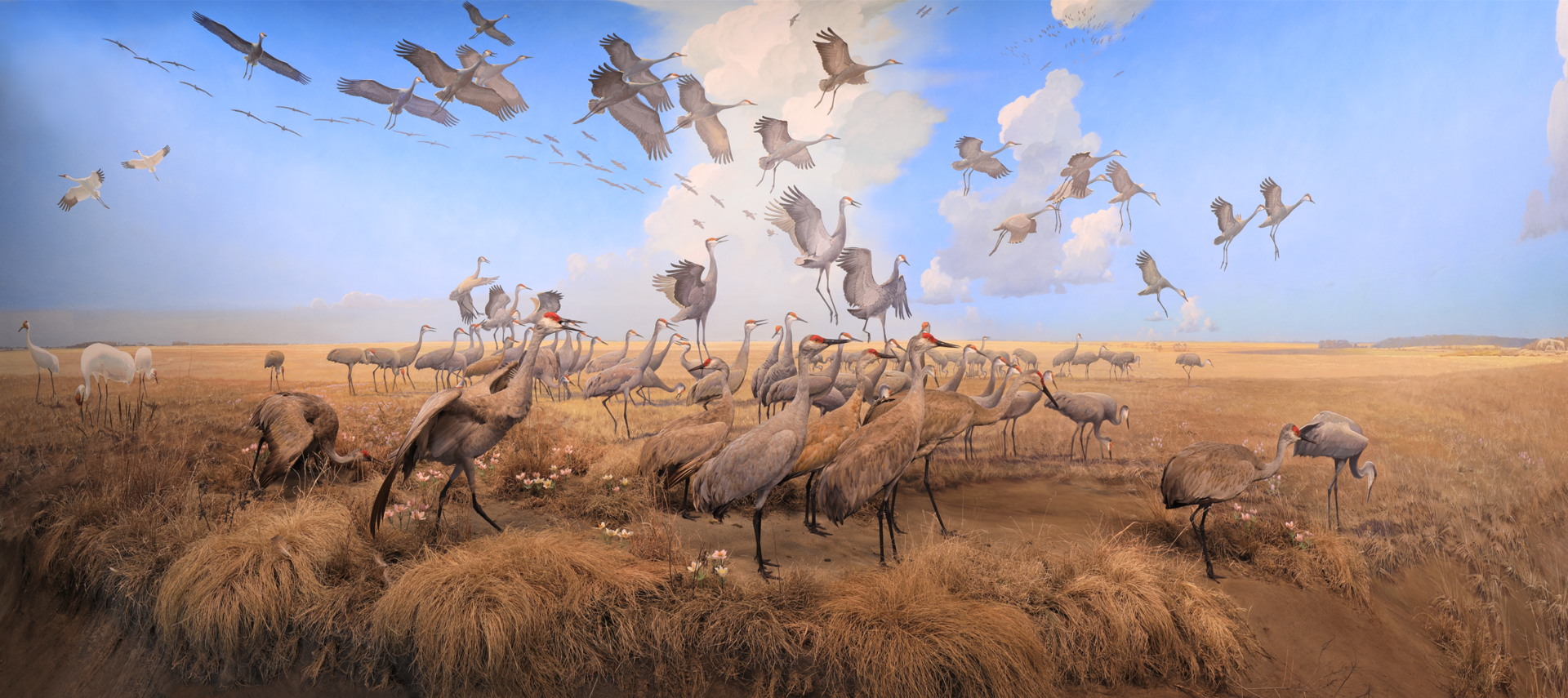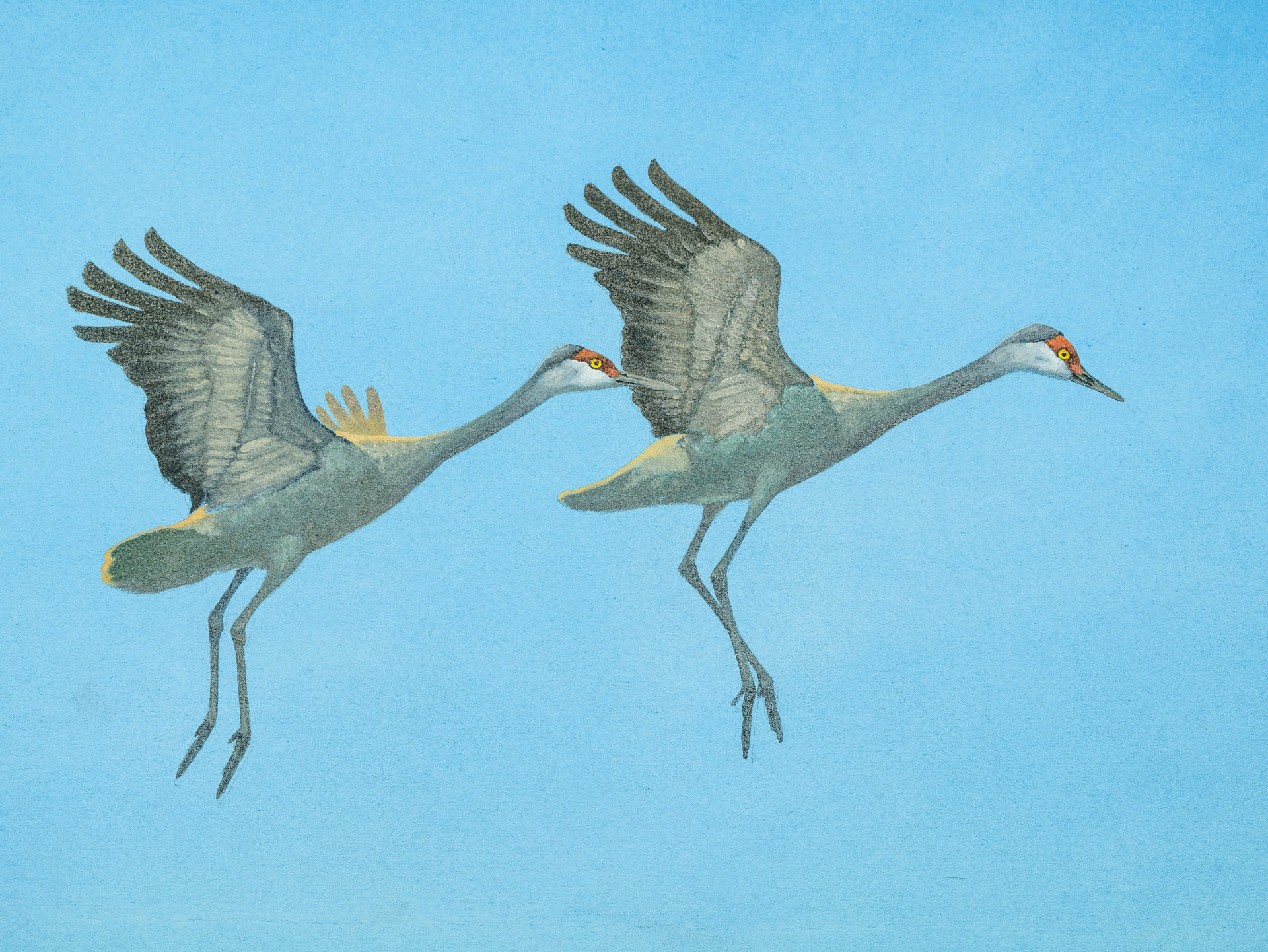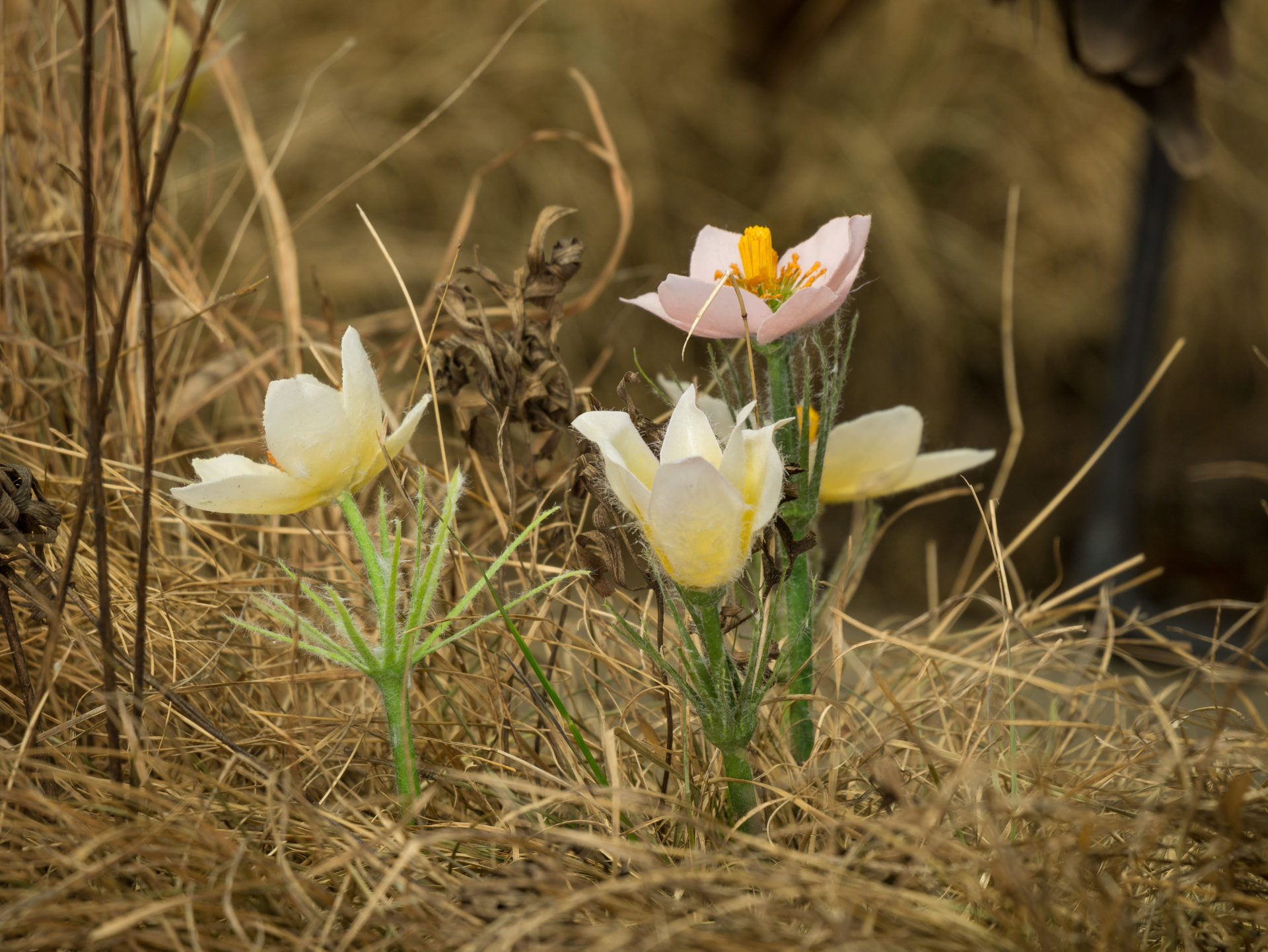
Diorama Spotlight: Cranes in the Red River Valley
Published05/01/2020 , by Adam Hartman, gallery programs assistant
It’s early May in the Red River Valley. Thousands of lesser and greater sandhill cranes gather just outside Fertile, Minnesota, on the sand dunes that remain of the dried lake bed of glacial Lake Agassiz. This is one of the sandhill cranes’ pit stops on their annual spring migration from the Gulf Coast. The larger, greater sandhill cranes may settle here, in Minnesota, but the lesser sandhills will travel even further north to spend the summer months nesting and raising their young in the Arctic.
Though it was constructed in 1946, Francis Lee Jaques and Walter Breckenridge designed Cranes in the Red River Valley to depict the valley as it was before agricultural development, in the mid 1800s. Back then the fertile soil still gave rise to a boundless prairie dotted with wetlands and rich in biodiversity—the perfect stage for thousands of sandhill cranes to perform their annual mating rituals. Cranes mate for life, and their pair bonds are reinforced through dance in a series of leaps, bows, and flaps. Throughout their performance they call—making sure their partners remain focused and attentive to their every move. Even today, thousands of cranes still gather in the Agassiz Dunes Scientific and Natural Area on what is now protected land.

At first glance, its design seems relatively simple—cranes and plains, but the depth and scale of the piece provides a much more immersive experience than initially meets the eye. Each of the 100-plus cranes in this diorama are depicted in action, creating a visually stimulating (if not almost overwhelming) environment that removes you from the quiet museum gallery where you stand. Focusing on an individual crane, or even one group can be difficult. Some leap, bow, or flap, while others forage. Flocks land or take flight in the background, while even more soar in the sky overhead. The sheer number of cranes, both painted and posed, creates an incredible illusion that makes it difficult to distinguish between the physical cranes and those that are painted. A carpet of little bluestem, prairie dropseed, and june grass further blurs the transition from foreground to background, creating a nearly seamless boundary. The ground is dotted with pasqueflowers—small and lavender, they are one of the first flowers to bloom on the prairie, often before the snow is fully melted.
On the painting’s left side, five white cranes stand out in the sea of brown and gray. You’d be forgiven for thinking that sandhill cranes are the only subjects of Cranes in the Red River Valley. However, the title, perhaps intentionally, leaves out the word “sandhill” because sandhill cranes are not the only cranes depicted here. These are whooping cranes, the only other species of cranes in North America, brought back from the brink of extinction after decades of intense conservation efforts. In 1941, 15 whooping cranes survived in the wild. All of today’s more than 800 whooping cranes are descended from those 15.
The sum of these parts creates a mesmerizing environment. As a viewer, you imagine being transported into a beautiful, open prairie in the Red River Valley that extends endlessly in every direction. You feel the sand between your toes where you stand. The smell of new growth fills your nose and a gust of wind blows through your hair. The air is filled with the trumpets and bugles of cranes eager to find their partners. As you take it all in, you become a part of the scene—another member of the flock.
Location: Sand dunes near Fertile, Minnesota, in northern Norman County, Minnesota Site Protected on Public Land: Agassiz Dunes Scientific and Natural Area, MN DNR
Biome: Prairie grasslands
Date depicted: mid 1800s
Date completed: 1946
Dimensions: 10’ x 22’
Background artist: Francis Lee Jaques
Foreground artist: Walter J. Breckenridge
Season: Spring migration
Donors: Founding Donor – Lillian N. Berthel, in memory of her son, Russell Messer Berthel; Donors of 2018 Restoration – Diorama Legacy Society
Restoration 2017: Midwest Art Conservation Center, Chase Studios, Museum Professionals, Split Rock Studios






